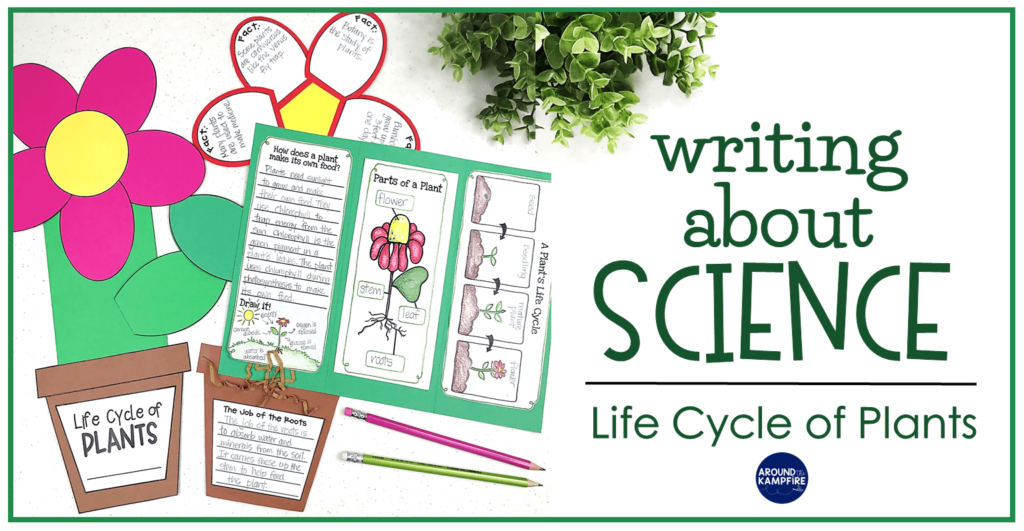
Kids love learning about life cycles and studying plants is always a highlight in my classroom. I am always looking for ways to get my students writing more about science and these plant life cycle activities are a creative and fun way to do just that! Making a culminating flower booklet during out plant life cycle study gave my students opportunities to write about what they have learned about photosynthesis, pollination, and how plants make their own food.
Plant Life Cycle Activities
We begin our unit by dissecting seeds. We observe the inside of a seed by first soaking lima beans. Soaking them for about 5 minutes makes it easy to split them open. Students can then use a magnifying glass for a closer look at the inside of the seed. Using pinto beans works too, but I prefer lima beans because of their larger size.
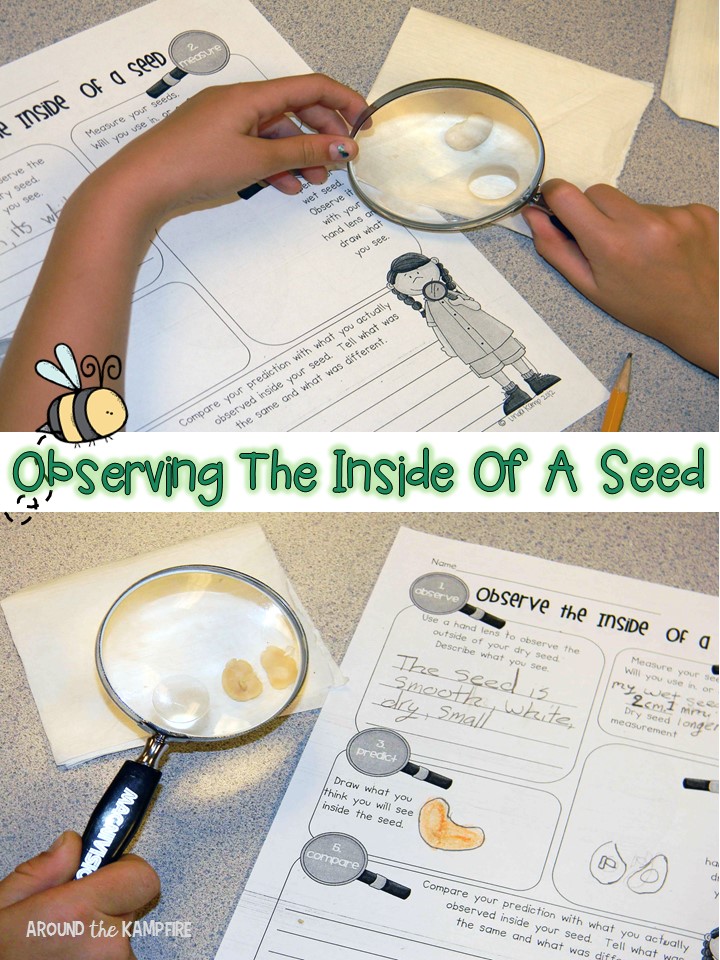
Parts Of A Seed
It’s pretty amazing the parts you can see once you open the bean. My class got very excited that they could actually see the plant embryo.
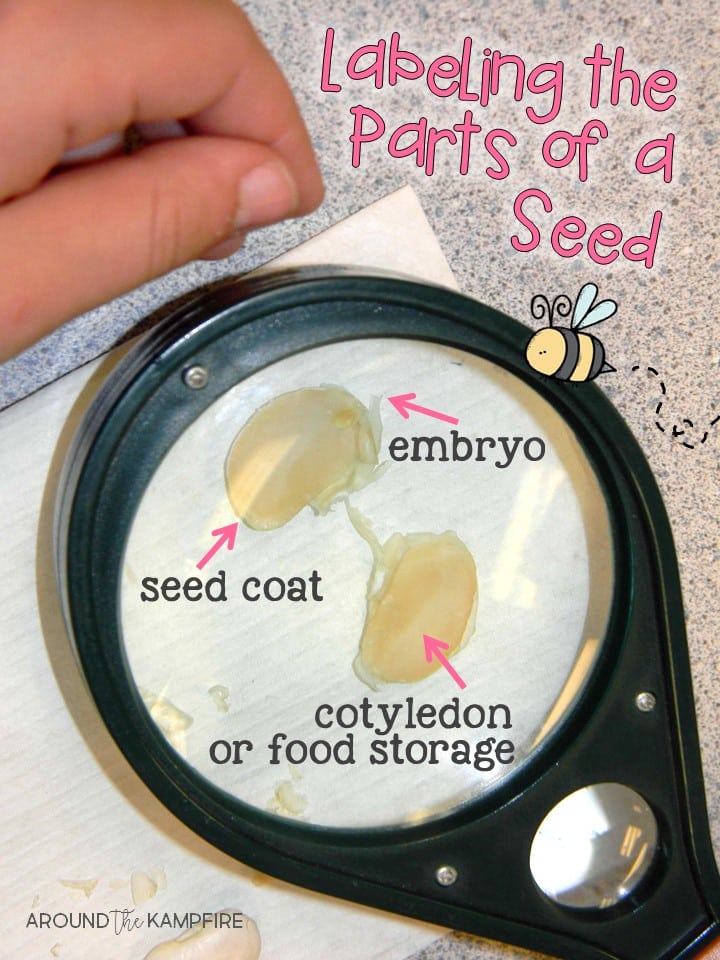
These large beans are perfect for a close up view of the inner workings and labeling the parts of a seed. Last year, I placed one under a document camera which made it even easier to see the seed coat, cotyledon, and the plant embryo.
Observing the Changes
During our plant study, we also germinate seeds and grow lima bean plants. We place our lima bean seeds between damp paper towels (with a little squirt of hand sanitizer to prevent mold) inside a sandwich bag. We check on them every couple of days and record any changes.
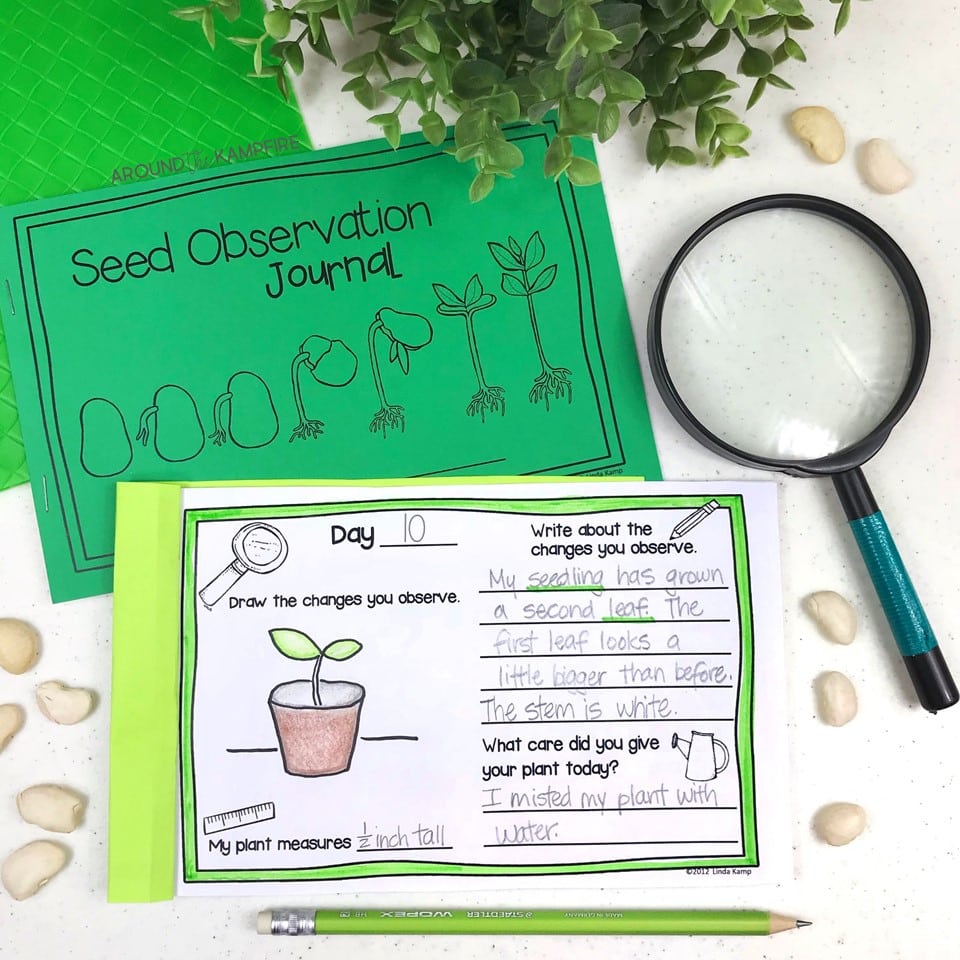
I recommend leaving the bags open so air can circulate. this helps to prevent mold that can grow on the beans.
Exploring How Leaves Help A Plant
As we learn about plants, we do several learning labs along the way including this one to answer the question,”How do leaves help a plant get light?”
This lesson visual makes for great discussion as students explore how the various leaf shapes help a plant get light. Students look at different types of leaves and compare their shape, size, and outer covering. We predict which leaf types would help a plant get more sunlight. We also ask ourselves, “Can we tell how much light a plant needs by the type and shape of leaf it has?”
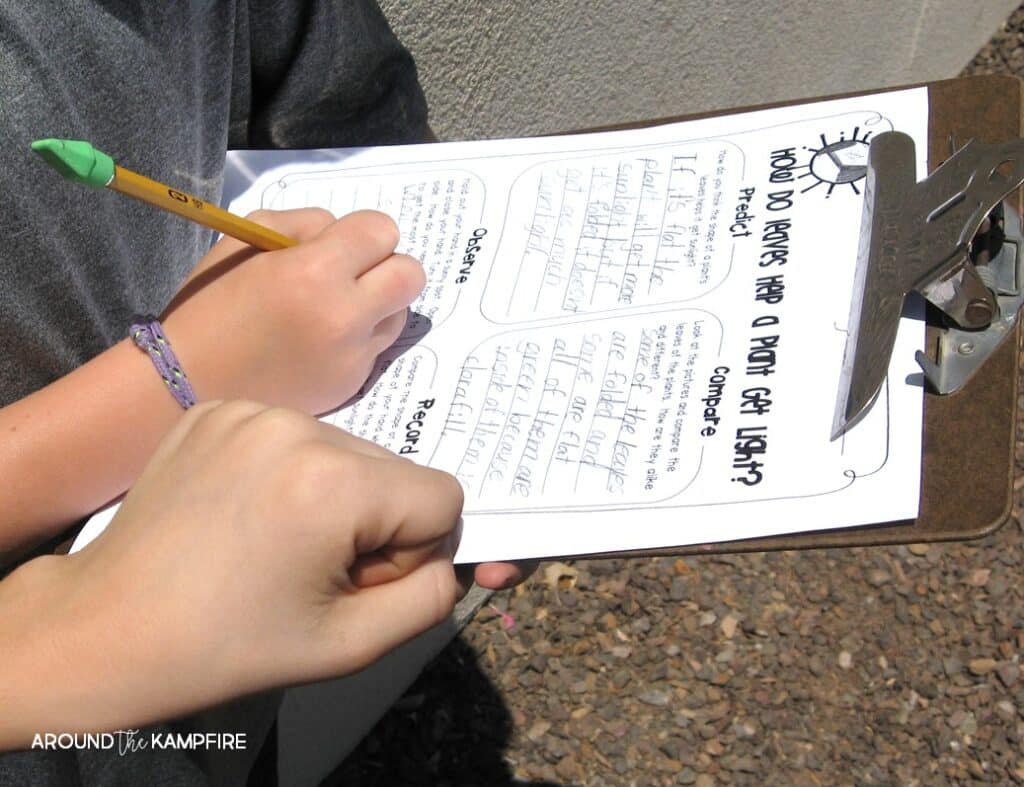
Incorporating Reading Skills in Science
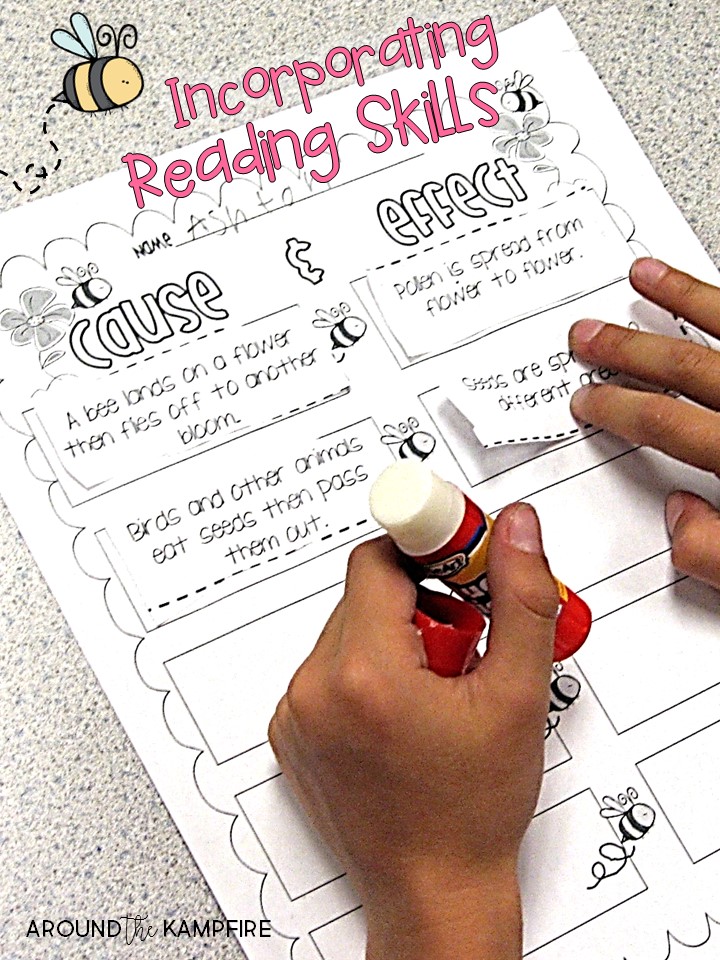
During our unit we make several mini books to include in our culminating project. After learning and working with plant vocabulary students use the vocabulary as they later explain various processes of the life cycle.
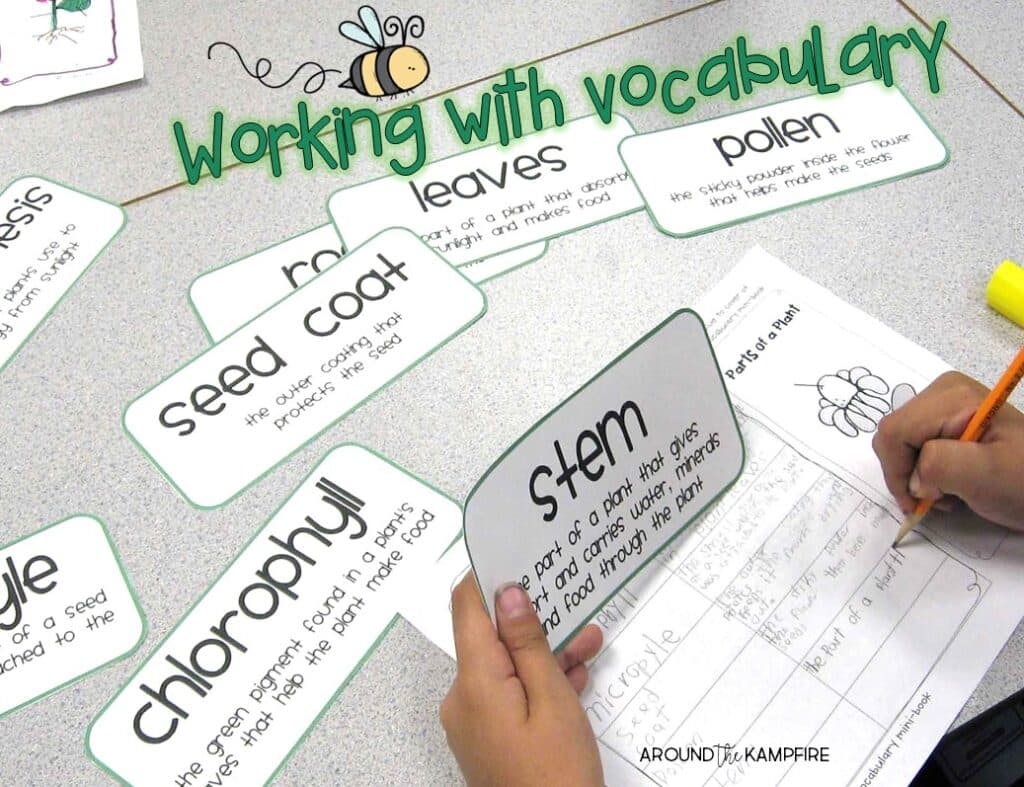
These plant science posters serve as a reference for students while they are writing. I expect them to use the content vocabulary as they write to explain the stages and processes of the life cycle as well as in their learning labs. We used these anchor charts to help us identify the parts of a plant and to understand the process of photosynthesis.
Writing to Explain
I gather lots of informational texts about plants for students to read and use during research. I also use videos from BrainPop Jr. during our lessons. We later write about photosynthesis and how a plant makes it’s own food in mini books. My students love the novelty of writing in mini books or even on smaller pages. These then go inside of our final flower booklets.
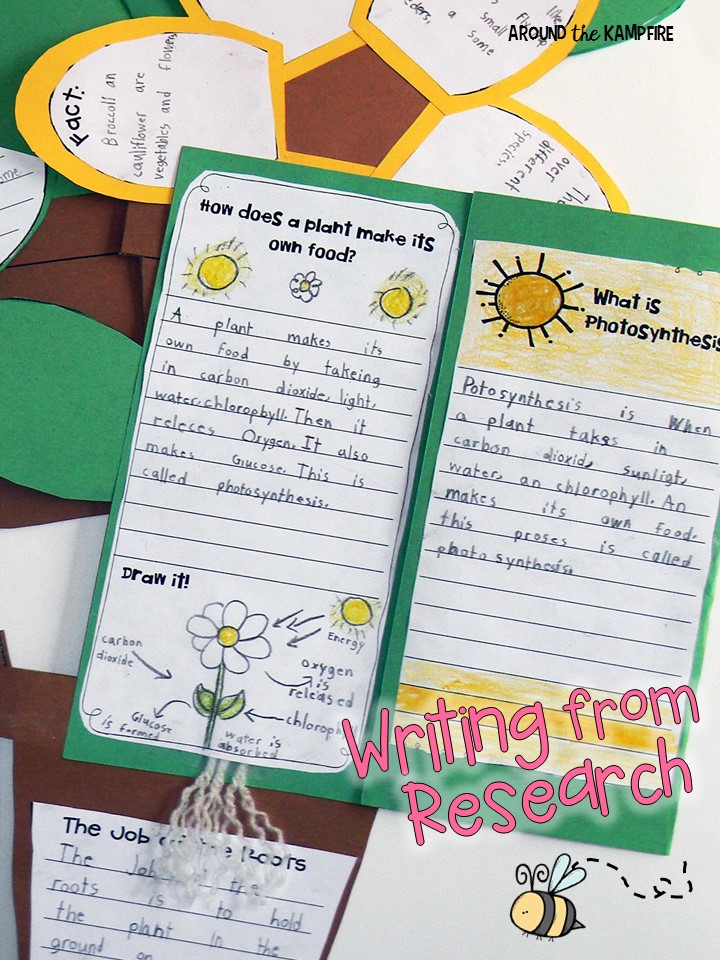
We used yarn to make the roots of our flowers before writing about the job of the roots.
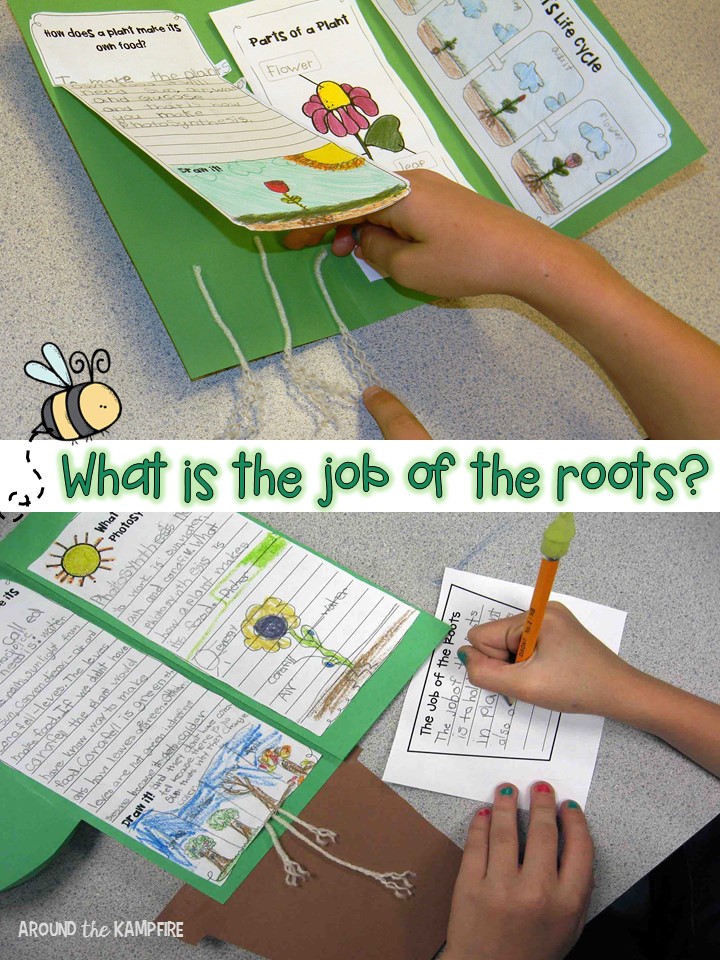
Another piece of our booklets includes writing to explain and researching plant facts. Students read informational books and research facts to include on the back of the flower’s petals.
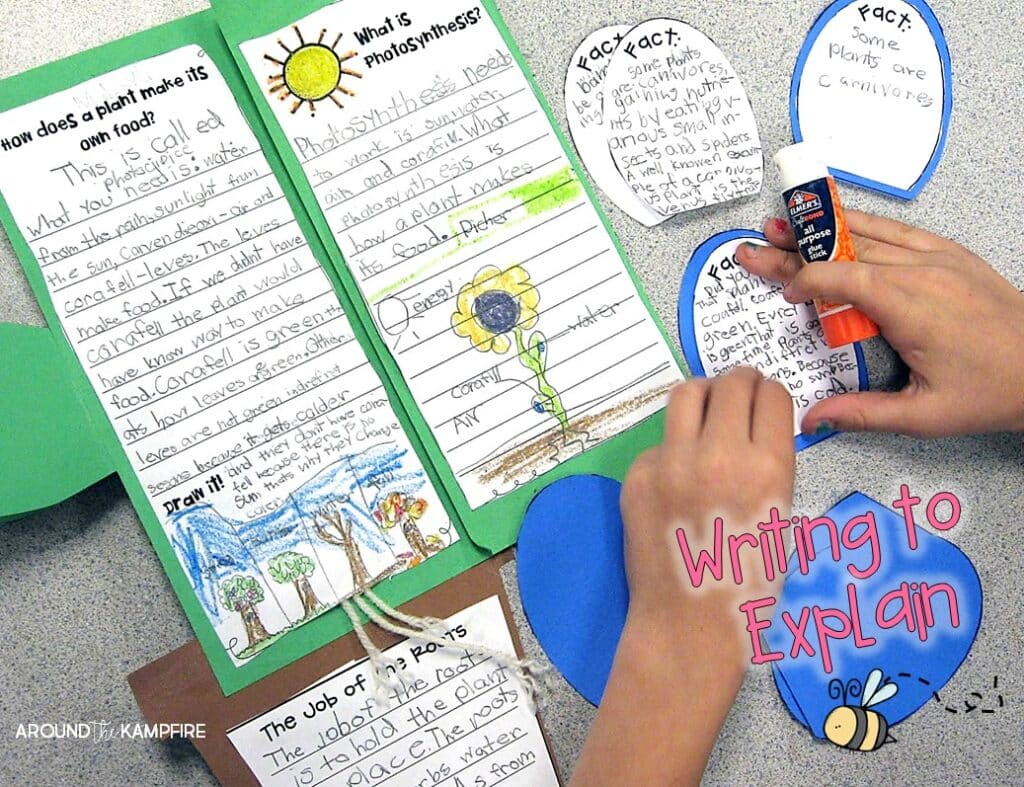
Incorporating Art In Science
Because students now understand why a plant’s leaves are green, I like to use that knowledge in an art activity. Toward the end of the day on a Friday we “paint” with chlorophyll by doing leaf rubbings.
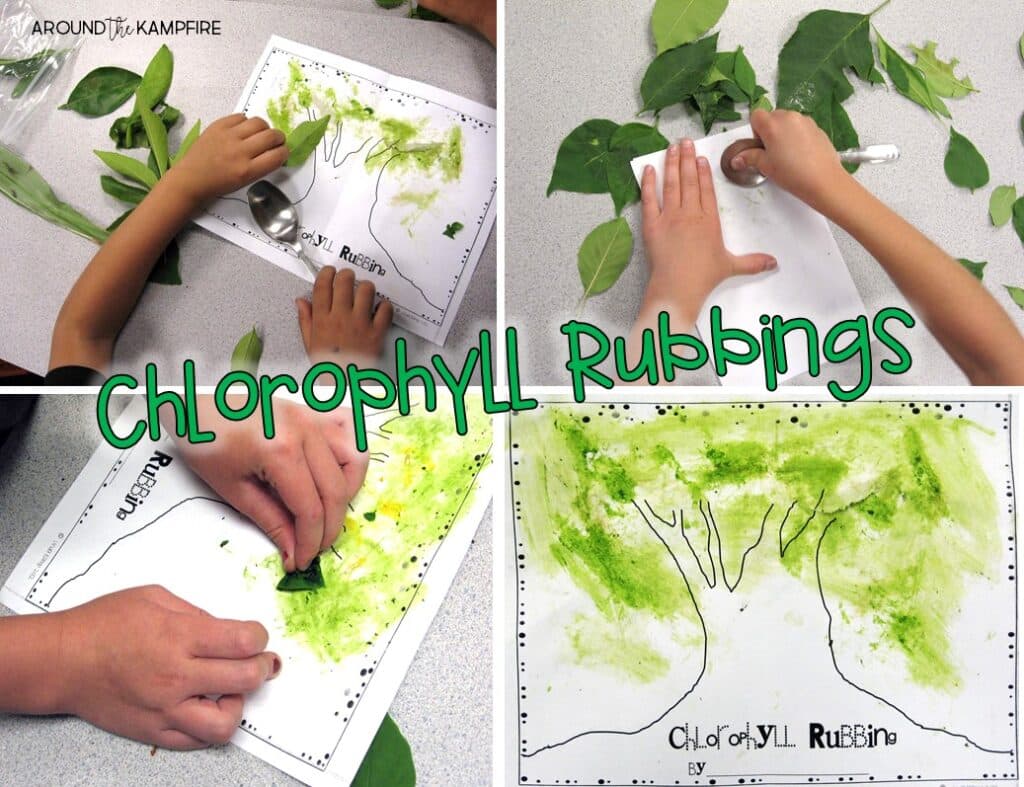
I love to tie in art wherever I can. This year my class learned about Van Gogh’s sunflower paintings during our plant unit. Several of my students wanted their booklets to be sunflowers.
At the end of our unit we displayed these in our hallway for our end of year open house along with all the activities we did with the frog and butterfly life cycles. Our parents were delighted with how we turned our hallway into a life cycle writing garden!
Plant Life Cycle Teaching Resources
All of the plant life cycle activities in this post are part of a complete science unit. Aligned to both CCSS and NGSS for grades 1-3, the unit includes a 9-lesson teaching PowerPoint, activities and science experiments for students to learn about plant needs, adaptations and growth, pollination, photosynthesis, seed dispersal and more. I’ve included detailed lesson plans that make it easier than ever to plan, prep, and teach. Click here to see the complete plant unit.
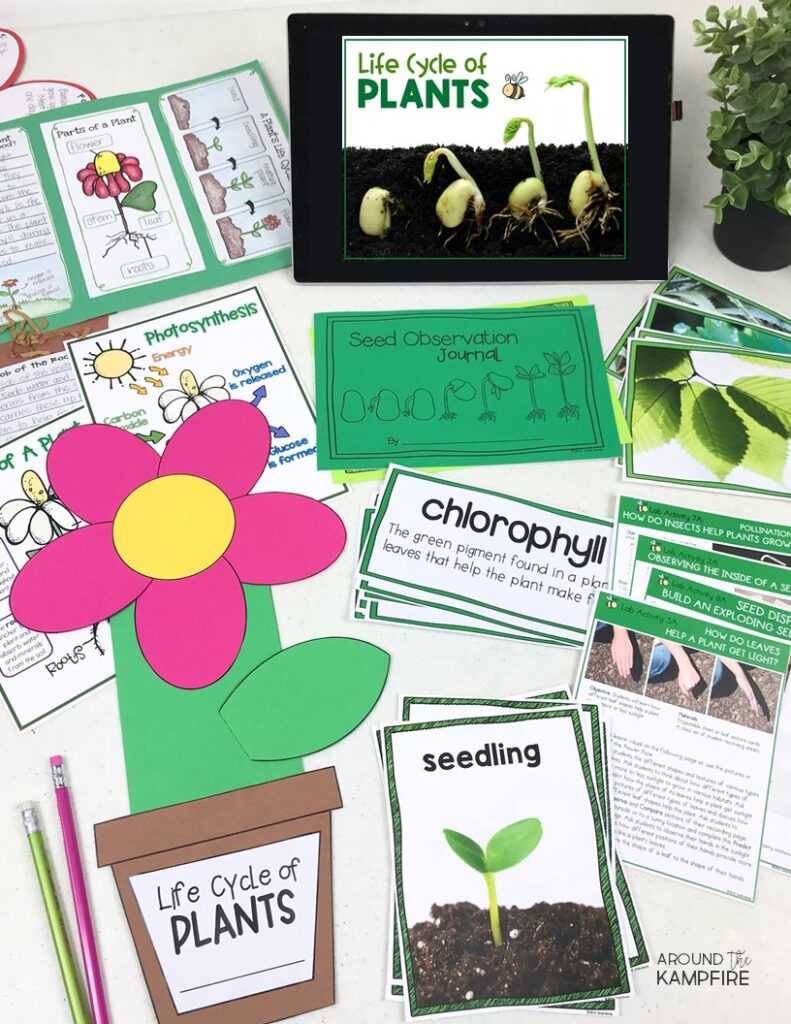
Would you like FREE plant posters for your classroom?
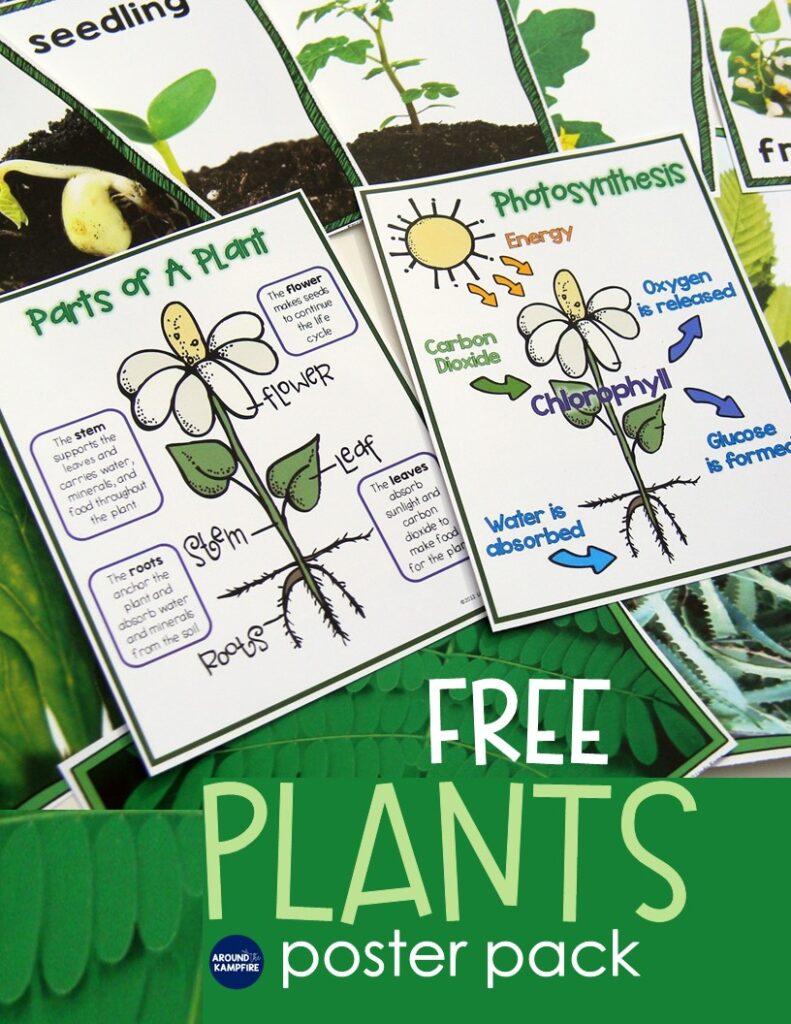
Drop in in your personal email address and I’ll send them to you! (Your personal email is best-Schools often block outside emails with attachments) Check all of your “other” folders if you don’t see the email.
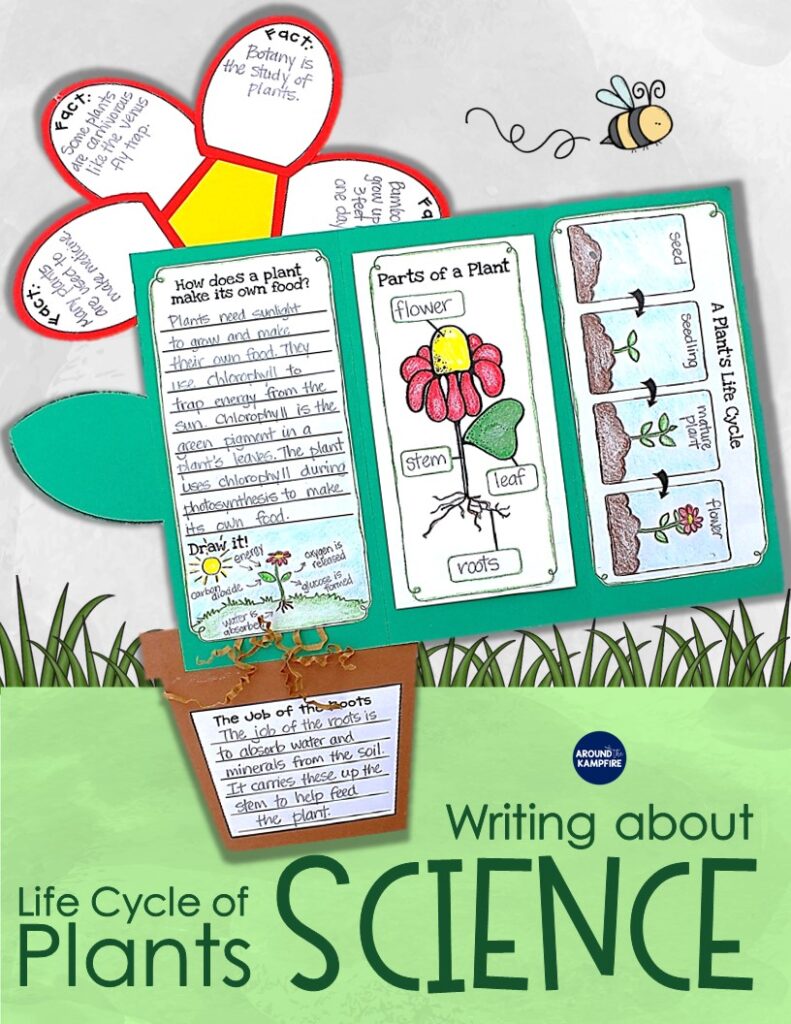
For more plant life cycle activities and science ideas, click on the pictures to read these posts!
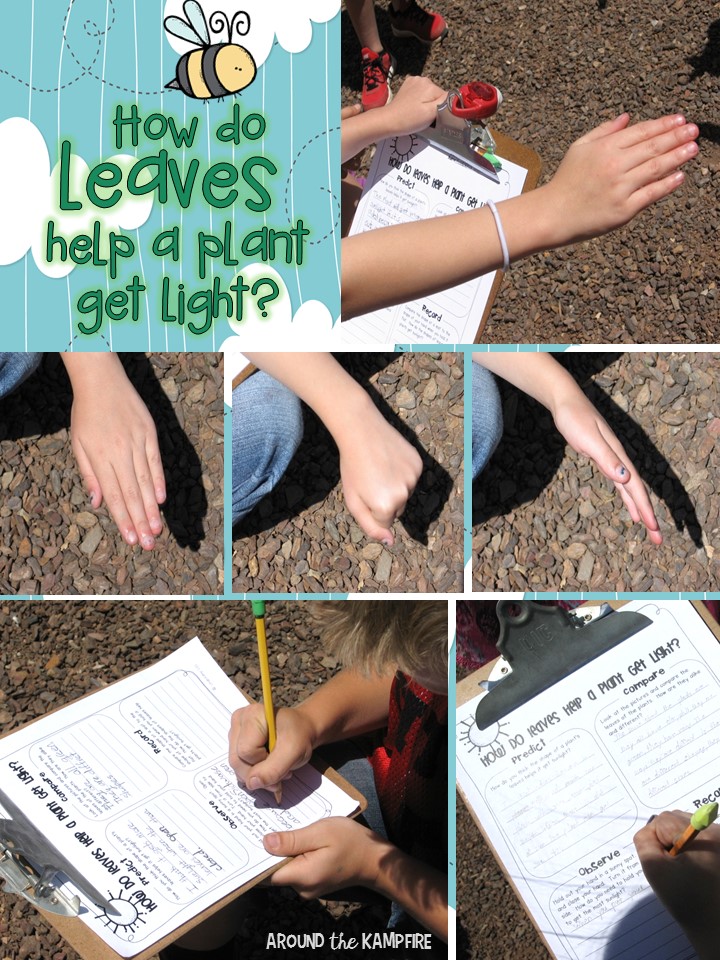
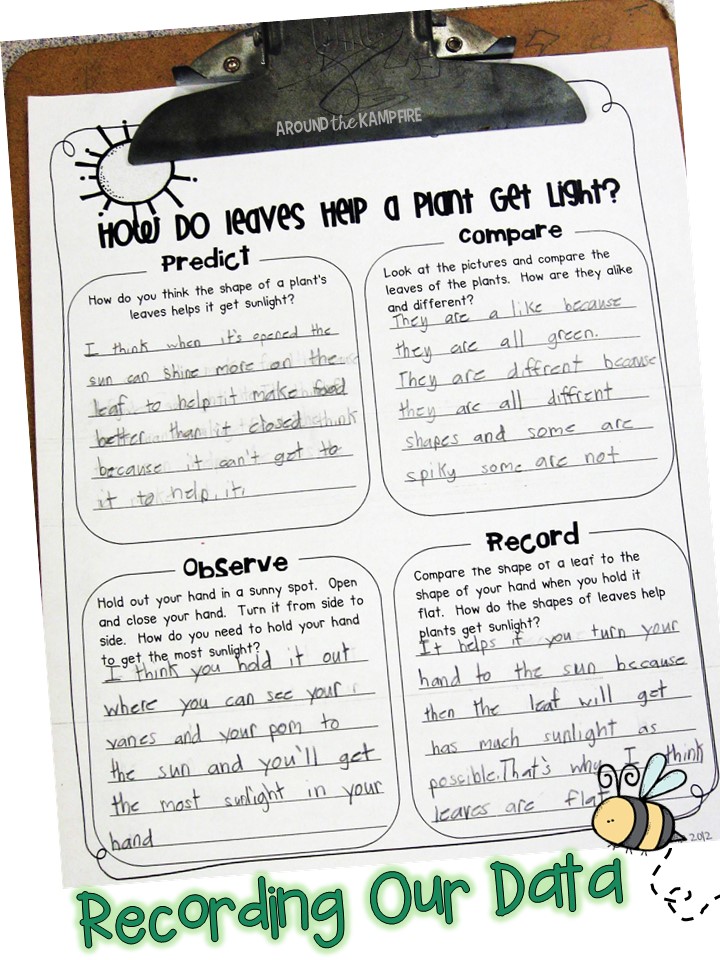
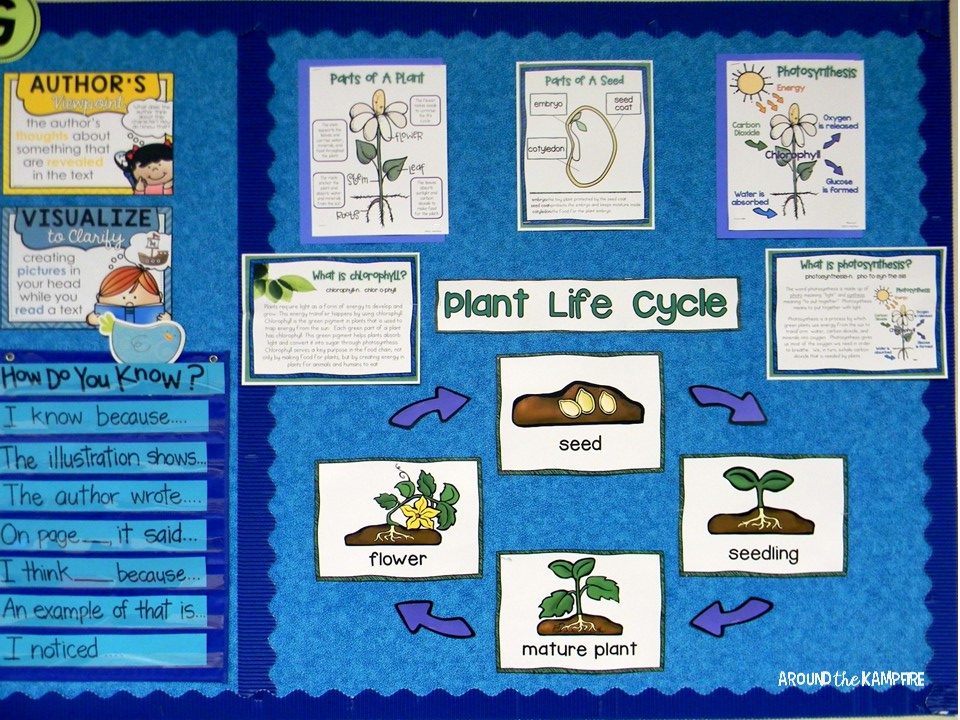
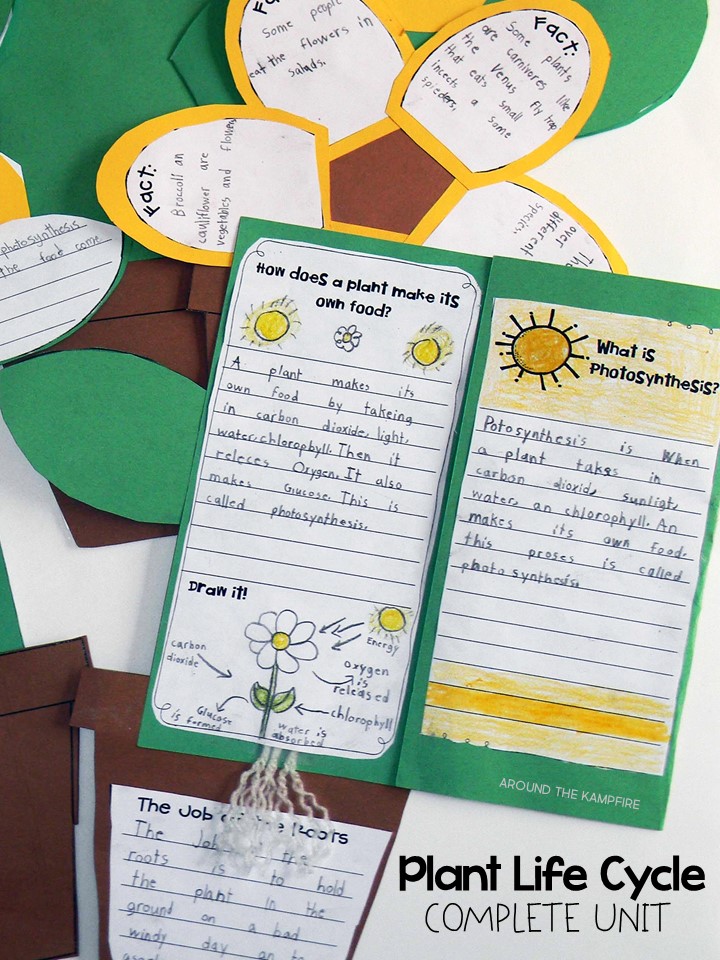

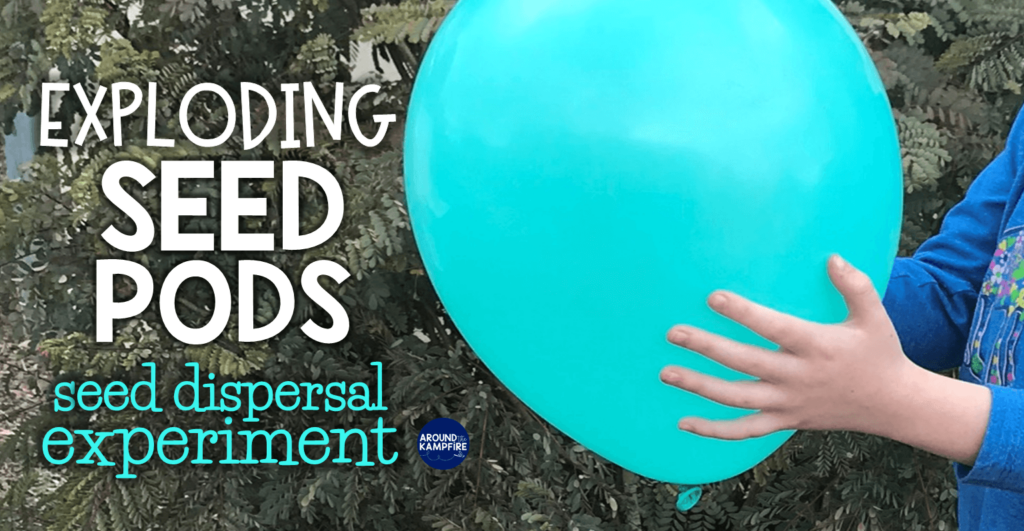
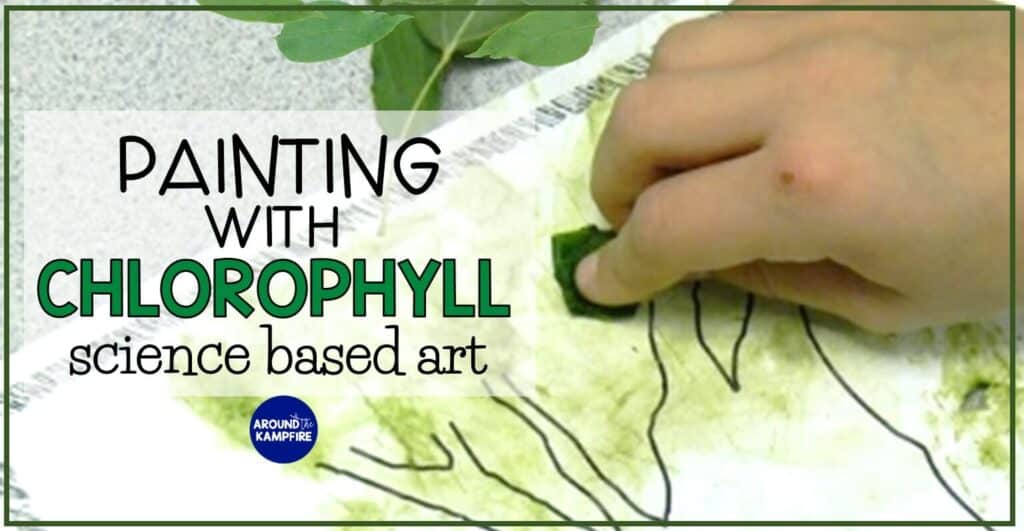

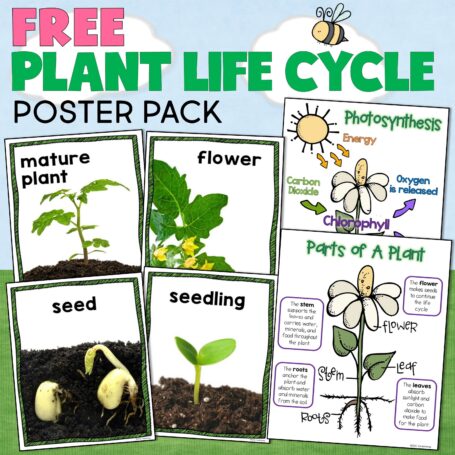
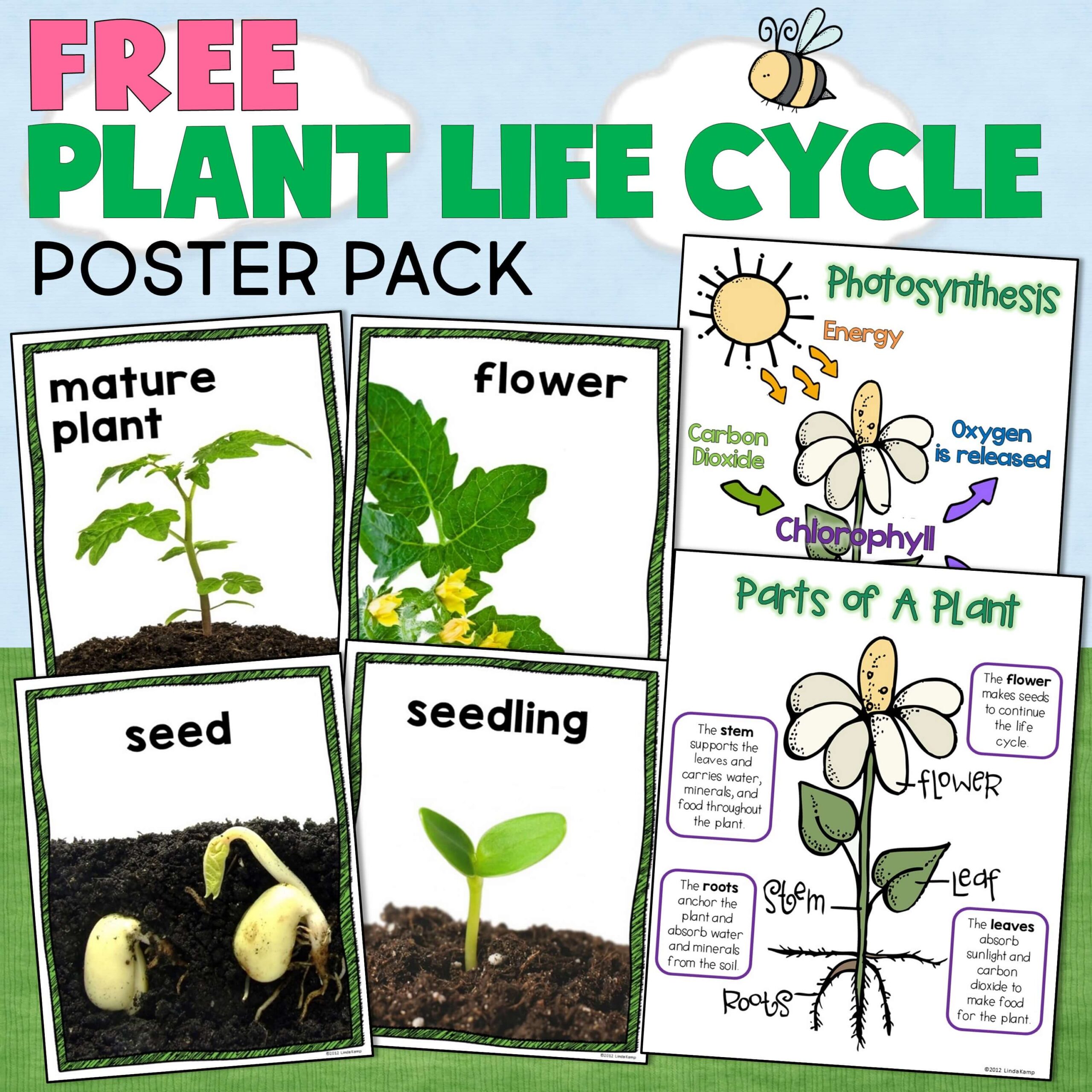
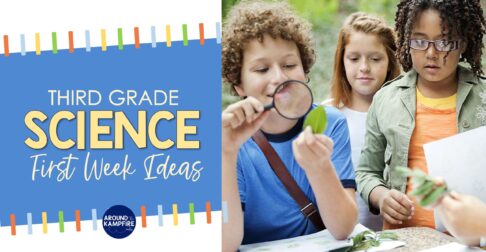
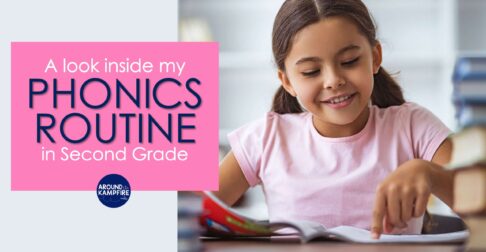
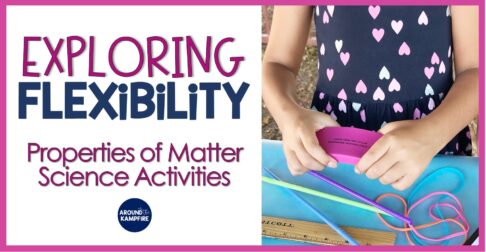

Amazing!!!
I’d love the free poster set!
This is so amazing!
This unit is great! It goes perfectly with our reading curriculum.
Please send this to me! My kids would LOVE this.
Can I have a copy of this plant unit? I teach 2nd grade at a school with limited resources..
Hi, This one is a great resource to work with children on plants. I have opted for the newsletters and subscribed. But I didn’t receive the poster pack.
Thanks
Hi Charu,
I just checked and an email was sent for you to confirm your subscription. Be sure to check your spam, promotions, and social folders (especially with Gmail) for that email. Once you click the link to confirm your subscription, a window will pop up with your poster download.
Linda
Hello,
I would like to get my freebie for subscription..What do I have to do?
Thanks a lot!
lorenn
Hi Lorena! You will need to subscribe in the form at the bottom of the post. Next, check your inbox and be sure to check your promotions, social, and spam folders if you don’t see the confirmation email in your inbox. That email will have a link to download the free poster pack. Thanks so much for subscribing!
Hello,
I am just wondering if this unit is editable as I’m in the UK so the spellings may vary. I might not also be allowed to use that font due to school policy. Would love to buy this unit as it’s my first class and I want the children to experience fun lessons with me.
Warmest wishes,
Amy
Hi Amy,
The unit is not editable but if you would email me at kamp.linda@gmail.com I will see if I can help you further.
Superb….Your students are lucky to have you.
I hope i become a creative teacher like you.
What standards is this lesson and unit aligned to?
Hi Harley,
There are multiple lessons in the unit that can easily be aligned to your state’s science standards as well as several informational reading and writing standards for 1st, 2nd, and 3rd grade. I did not include a science standards alignment page with the unit as each state has different standards. If you use C.C.S.S. the informational writing activities align to W.2 and W.7. I hope this helps, and thanks so much for asking!
Magnífico. Amazing. Very useful. From Spain.
HI Carly,
Unfortunately, I don't have a rubric for the flower booklet. It's a great idea though, thanks so much for asking!
just wondering…. do you have a rubric for the flower booklet?
Hi Linda,
I just found your blog through Pinterest! I just love your fuscia — so pretty! I live in Las Vegas and was wondering how you keep your fuscia so pretty (and alive in the desert heat)? I want one here, but don't know how it would survive in the summer heat. Any help would be greatly appreciated!
Catherine
Hi Linda! The culminating activity is putting all the writing together in the flower booklet.
I hope your kiddos enjoy it as much as mine do!
These activities look awesome & I'm going to buy the unit on TPT! What is your culminating activity?
Oh, Nancy you're right! It IS a fuscia! Thank you!
The activities and amazing. They are focused, meaningful and cute. What an amazing unit!
So amazing. I have to read more than once just to take it all in! Love! 🙂
What a lot of learning was going on in your class! Thanks for the posters!
REALLY cool unit!! Thank you for sharing. One little correction: the plant you called freesia is actually a fuschia. They are two VERY different plants!
Ummm…I love ALL of this!! What a fantastic post…and unit!!.
This unit looks amazing!!!! Freesia is one of my favorites!!!!